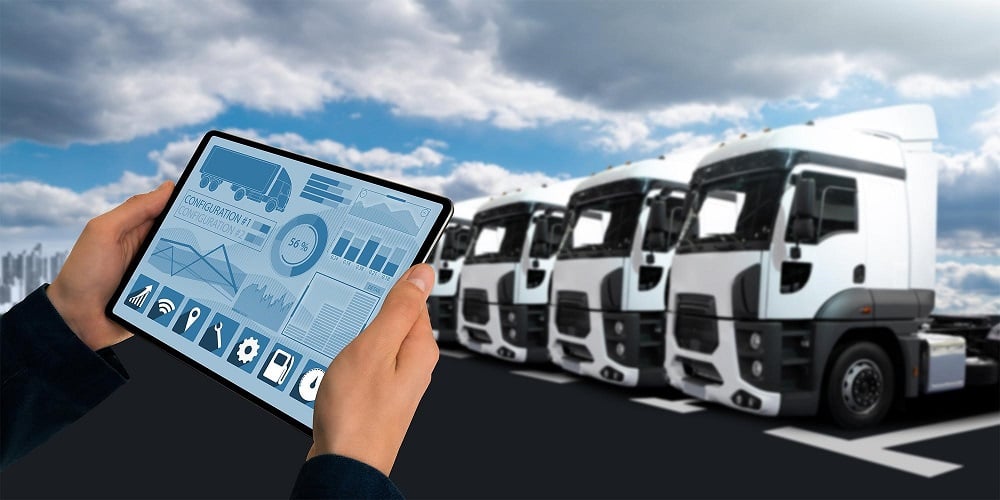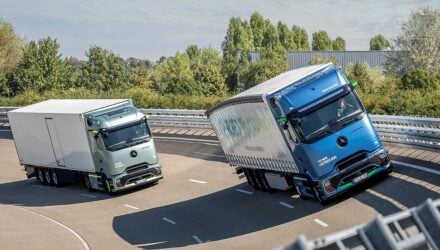The effects of 2020 have changed how most of us work, particularly in the fleet service industry with more and more fleet management staff working from home.
In fact, mid-way through 2020, more than 70% of fleet decision-makers said they were remotely running operations.
Although the working environment has changed, there’s also the growing pressure for fleet operations to become more efficient and to speed up delivery times. These urgent needs have seen new technologies and management systems emerge to better enable fleet operations to respond.
What are the latest developments in Fleet Management technology?
Telematics and Data Tracking
Telematics includes every aspect of telecommunications, road transport and safety, wireless and internet-driven technologies that feature in most standard fleet vehicles. Telematics usually includes GPS and tracking devices that capture essential data such as fuel consumption levels, engine faults, braking power, speed, and vehicle location.
While there’s nothing particularly new about this, it has grown into a multi-billion-dollar industry. With up to 40% of UK businesses choosing to deploy fleet telematics.
Data management is more integrated with telematics, and automation and AI are propelling it to new levels. Vehicles can now check on and predict their own maintenance needs, which makes fleet operations smoother and more streamlined. So, for remote-working fleet managers, this couldn’t have come at a better time.
Mobility-as-a-Service (MaaS)
Higher expectations and demands are pushing fleet management to become more flexible. With fewer owned vehicles, fleet managers are being more creative in finding agile, adaptive, efficient and sustainable forms of transportation, like ride-sharing or carpools.
Matthew Walters, head of consultancy and customer data services at LeasePlan UK expects to see continued demand for company fleets, but more versatile approaches to match these needs.
“It’s imperative that leasing providers expand their range of services to adapt to changing needs and behaviours towards vehicle ownership. For example, vehicle subscription services are an emerging and exciting trend, as well as flexible leading options that can offer the user an option between daily hire and long-term contracts.”
5G Network
With high volumes of data monitoring, tracking, and transmission between devices, 4G networks are struggling to keep up. And where vehicles are adding IoT hardware, advanced GPS, multiple data points and better connectivity between vehicles, a network with better capacity is now needed.
Automated Vehicles
Many research projects suggest human error contributes to over 85% of road collisions. While driverless cars aren’t yet ready to take to the roads, there are plenty of Advanced Driver Assistance Systems (ADAS). From collision warning signals to adaptive cruise control, automated technology is gradually making the lives of fleet drivers easier.
How can these developments benefit productivity?
● Fleet management is faster and more efficient
Telematics and IoT devices are enabling fleet managers to receive data from vehicles in real-time. And, with an increasing number of automated tools and sensors installed, vehicles are sending data faster than before.
DHL has developed a new SmarTrucking fleet management solution that uses sensors in and around trucks to communicate with fleet managers, which is reducing their transit times by up to 50%.
● Vehicle downtime is minimized
Real-time data reporting via telematics is also assisting remote workers with completing more jobs in a shorter space of time. For example, fleet managers will know straight away when they need to replace a vehicle’s tires. This approach to data processing means they can take more preventative measures to reduce the risk of breakdowns.
Providers of AI-powered tire monitoring technology, TyreWatch developed a proactive approach to this technology by partnering with McLaren Applied. They launched a predictive modelling solution which identifies tire failure at close to 100% accuracy.
● Systems and processes become more integrated
When processes become integrated into a fleet management software system, operations and workflows get streamlined. Plus, increased adoption of GPS tracking technology improves driver route optimization and makes operations more connected.
With software automation tracking data on fuel levels, fleet managers don’t need to carry out manual monitoring. Because automation will do the work to notify the next process in the chain for them.
● Operational costs reduce
On the subject of fuel, this is an area that sets up most fleet operations to spend around a quarter of their total budget. But where there’s so much data monitoring going on, fuel gets used in more proactive and resourceful ways.
For example, in the first year after installing sensors in their HGV’s, Saia LTL Freight Inc saved 15 million dollars on fuel costs.
They achieved this by incentivising drivers to conserve the amount of fuel they used and reduce instances of fuel theft. So, thanks to integrated systems and telematics, fleet managers were able to take a more active stance to manage and reduce the burdensome costs of fuel.
How is fleet technology improving workplace safety?
Data is improving conditions
By using data monitoring to assess how accidents are happening, telematics allows safer conditions for drivers.
Oil and Gas company Crescent Services LLC improved safety within their fleet of drivers by programming specific metrics into monitoring systems. By tracking the use of seat belts, braking systems and the amount of speeding, drivers could improve their conditions by competing for the highest standards in-car safety.
Video is improving safety
From signal violations to tailgating, new video and AI technology are capturing footage to help classify driving errors or incidents. And by classifying them this way, video is assisting in making improvements to driver management.
Take dash-cams, for example. When they’re installed in every fleet vehicle, and integrated with real-time GPS tracking, the footage they capture adds valuable context to driver analysis and assists with improving general safety standards.
Fewer collisions are occurring
Collision avoidance systems are a form of ADAS that reduce the number of road accidents. After installing collision warning systems into their vehicles, a study found more than two-thirds of drivers gave more attention to the road.
Collision avoidance systems such as autonomous emergency braking, adaptive cruise control, blind-spot detection and traffic sign recognition are all working to reduce the number of driving accidents and fatal injuries.
Author: Craig Greenhalgh, Research Analyst, Comparesoft




















